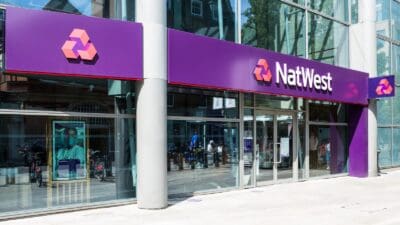BT (LSE: BT-A) (NYSE: BT.US), Aga Rangemaster (LSE: AGA) and Thorntons (LSE: THT) are three FTSE companies with big — and currently rising — pension deficits.
As a result, all three firms are set to hand over more of their annual profits to their pension schemes in order to eliminate the shortfall. How concerned should investors be about these companies’ onerous obligations to their pensioners?
A pension deficit can be found as “retirement benefit obligations” under “non-current liabilities” on a company’s balance sheet. The number represents the difference between the pension scheme’s assets — investments, such as equities, bonds, and property (even maturing whisky in the case of drinks company Diageo!) — and the present value of future retirement benefits that need to be paid.
Should you invest £1,000 in Frasers Group Plc right now?
When investing expert Mark Rogers has a stock tip, it can pay to listen. After all, the flagship Motley Fool Share Advisor newsletter he has run for nearly a decade has provided thousands of paying members with top stock recommendations from the UK and US markets. And right now, Mark thinks there are 6 standout stocks that investors should consider buying. Want to see if Frasers Group Plc made the list?
The table below shows a selection of financial figures for BT, Aga and Thorntons.
| Market cap | Operating profit last 12 months | Current pension deficit | Pension deficit 12 months ago | |
| BT | £39bn | £3.4bn | £7.9bn | £7.3bn |
| Aga | £73m | £9.6m | £72.0m | £35.8m |
| Thorntons | £50m | £9.3m | £36.7m | £28.3m |
As you can see, Aga’s pension deficit has doubled over the last 12 months, and now represents almost 100% of the company’s market capitalisation, compared with 73% for Thorntons and 20% for BT. Aga’s deficit is also equivalent to 7.5 times the company’s current annual operating profit, compared with 3.9 times for Thorntons and 2.3 times for BT.
Clearly, Aga’s deficit is the most serious, so let’s begin with the upmarket cooker company.
Companies and their pension trustees review the funding of their pension schemes every three years. Aga is currently in the process of doing that. If the existing deficit recovery plan were to remain in place, Aga would pay £4m this year and £10m a year from 2016 to 2021 inclusive, as well as a £30m lump sum contribution at the end of 2020.
With Aga’s annual operating profit currently £9.6m, the business is effectively being run for the benefit of the company’s pensioners. That will continue to be the case for the foreseeable future, even if Aga can grow its annual profits at a faster rate than most other companies. A tangible indicator of the lack of shareholder value here is the absence of a dividend since 2011. The board needs the consent of the pension trustee to pay a dividend, and hasn’t even asked, such is the miserableness of the financial position. In my view, due to Aga’s pension deficit, the company is currently uninvestable.
Thorntons is in the midst of finalising a new deficit recovery schedule with its pension trustee, which will see the annual deficit payment increase from £2.75m to £3.25m. With operating profit running at £9.3m, Thornton’s situation isn’t as dire as Aga’s, but — like Aga — the confectioner hasn’t paid a dividend since 2011.
Thornton’s pension scheme assets contain a relatively high exposure to equities of 65%, versus 28% for BT and 17% for Aga. Less risky assets such as bonds, are seen as more compatible with the nature of pension obligations, and Thornton’s high equity exposure could result in its deficit gaping much wider in the event of a stock market crash.
BT and its pension trustee have just finalised their triennial deficit recovery plan. The numbers involved are much bigger in absolute terms than those of Aga and Thorntons (starting with £2bn over the next three years), and the telecom firm’s extra annual payments also stretch out as far as 2030. However, relative to BT’s own financials, the obligations are less onerous than those faced by the two smaller companies — highlighted by the fact that BT pays a dividend.
Pension deficits have become such a problem of late largely because of low gilt yields, resulting directly from the fiscal policy of Quantitative Easing. Unprecedented low yields have meant unprecedented low discount rates applied to pension schemes projected liabilities. While scheme assets have generally been increasing in value, liabilities have been increasing at an even higher rate.
This situation should reverse when things get back to normal, and is an added reason why I think investors in BT should not be too concerned about the company’s current pension deficit. I also think this factor makes Thorntons investable at the present time — although whether the company’s current business performance merits investment is another matter. The position at Aga, though, is so extreme that, in my view, the stock is currently best avoided.







